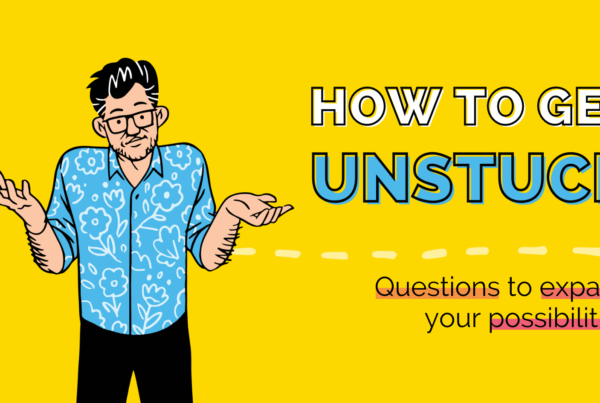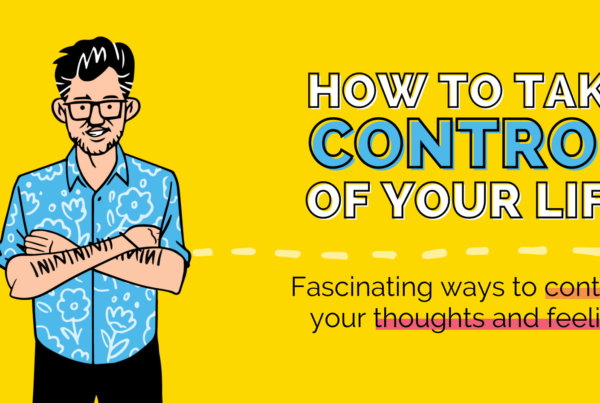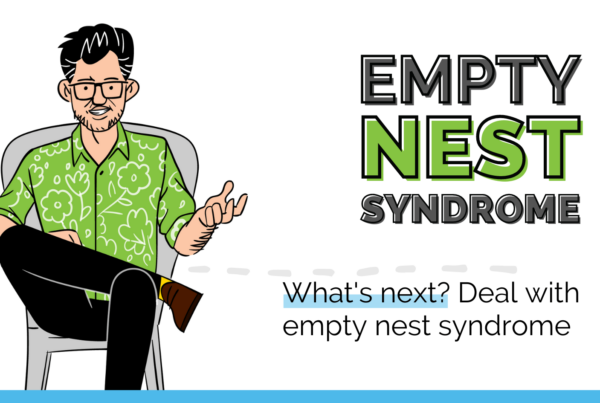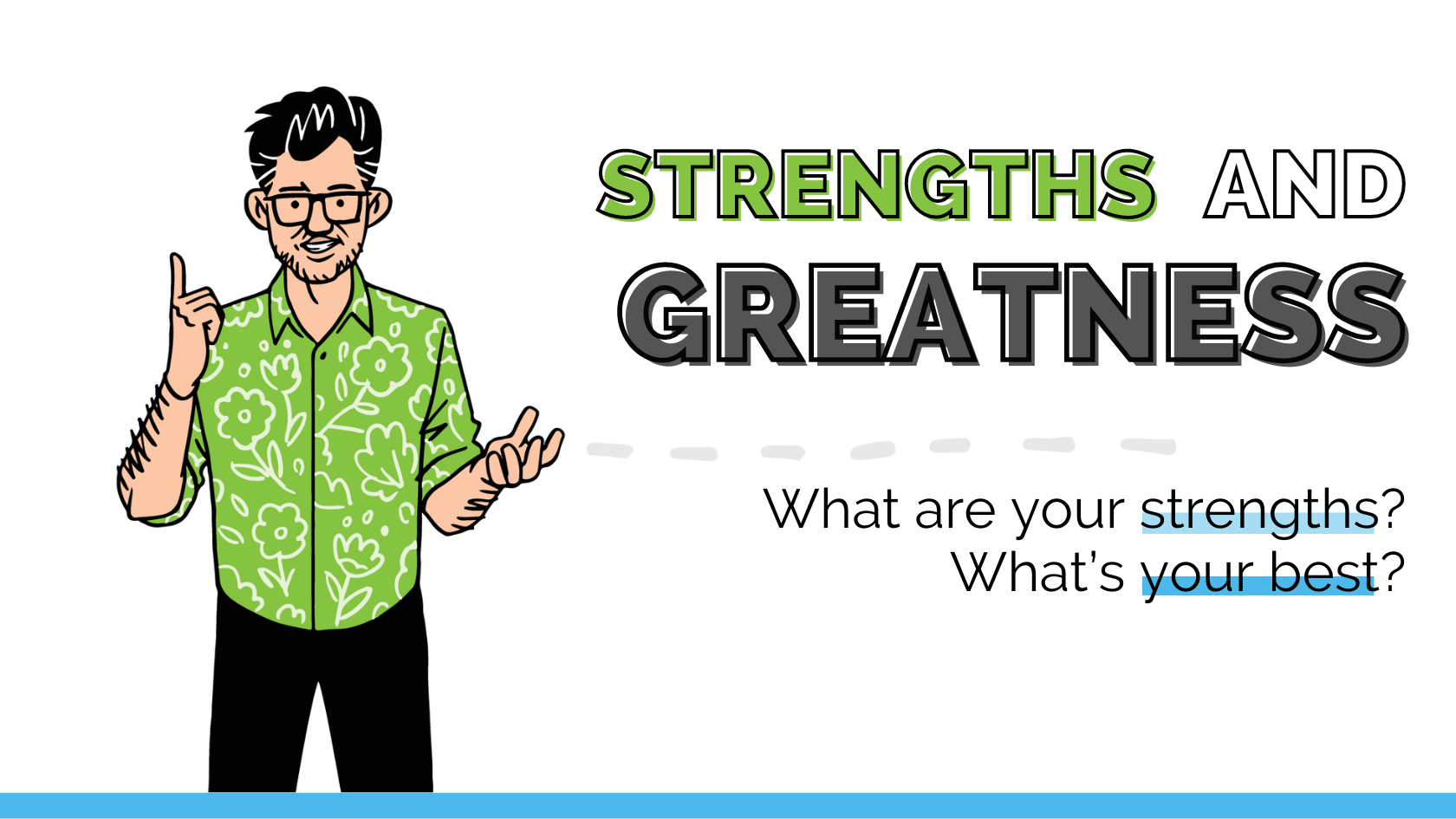
Imagine this… you’ve just completed a personality test, and your results have been generated by the algorithm. Maybe it was Myers-Briggs, or DISC, or perhaps StrengthsFinder.
You’re delighted with the results. It “gets you”. You take the first opportunity to slip your personality type into a conversation with a colleague. “Actually, as an ESTD…” or “Well, drawing on one of my five lead strengths from Stregthfinder…!”
I’ve taken all those personality tests myself, and I always like staring into the (slightly warped) mirror to see what I notice about myself this time. But for the people I work with, those results are always less helpful than I might hope.
They might point to something true about you. But they don’t give a lot of insight on how to work best with you.
To truly excel in your role and become a great leader, it’s a lot more productive to look beyond your strengths and uncover your greatness.
The Greatest Answers Come From the Greatest Questions
Become a better leader. Better teacher. Better person.
Learn how to ask the right questions the right way with this free download.
Eight Ways to Ask a Question Well
Knowing Your Strengths Is a Good Place to Start
Don’t get me wrong. Having an idea of your strengths and weaknesses is useful.
When you have a level-headed idea of who you are, you step into humility. You’ve got both feet on the ground, you know who you are, and where and how you stand.
It’s only through doing this work that you can arrive at CS Lewis’s insight that, “humility is not thinking less of yourself, it’s thinking of yourself less.”
You can only do this when you’ve done the work to accept yourself and are less likely to be hijacked by the need to prove your strengths or disguise your weaknesses.
Although personality tests can help, self-coaching is a powerful way to familiarize yourself with what you’re good at – and less good at.
With self-reflection, you’ll probably find that you have a mixture of inherent strengths and accumulated strengths, although they often dance between each other.
For example, I’m a good facilitator. I love bringing people together and I’ve got an inherent ability to see the big picture and understand group dynamics. But it’s also something that I’ve built subject matter expertise around through training.
I think that’s often the way with strengths. When we’re good at something, we tend to enjoy it and we’re more inclined to invest time and energy into practice. Therefore we get better at it, and it becomes a virtuous cycle.
That said, there’s also stuff that you may not be inherently brilliant at, but you’ve put in the work and time to make it a strength.
How to Find Your Best
The question “What’s your best?” is miles apart from asking, “What are your strengths?”
While the latter centers around things you are technically good at, your best is when you shine, when you’re lit up, when you’re stretched to the edge of who you are – when you unlock your greatness.
If you want to build great workplace relationships, being able to articulate what that looks like, and how they can bring out the best in you, is vital.
So, here’s how to find your best.
1. Reflect on the Amplify Question
In my latest book, How To Work With (Almost Anyone), I introduce the idea of a Keystone Conversation. This involves you and a collaborator talking through five questions to make your working relationship as good as it can be.
The first question is the Amplify Question – What’s your best?
Before you have the Keystone Conversation with another person, I advise meditating on this question – and the other four – by yourself. Doing this will help you enter the dialogue with humility and vulnerability, and encourage the other person to do the same.
To solve the puzzle of finding out who you are at your best, I recommend thinking about when you enter what the brilliant psychologist, Dr. Mihalyi Csikszentmihalyi calls, the “flow state”.
This is the stuff that you do that unleashes your intrinsic motivation. It makes time speed up and slow down. You’re happy. You’re thinking bigger. You feel alive and exhilarated.
You’re truly in the moment and present in the act that you’re doing.
2. Find Your Learning Edge
Now, your flow state won’t necessarily correlate with what you are good at. Confuse the two, and you could end up manacled by what you are half-decent at, because collapsing “good at” into “fulfilled by” is annoyingly easy.
When you are good at something you don’t enjoy, you become trapped by your own skill level. You do it well, so people give it to you to do. You do it well, so you think it’s yours to do. You do it well, so you don’t trust others to do it. That’s the curse of competence.
To tease apart the difference between what you’re good at and what you are fulfilled by, I recommend another exercise from How To Work With (Almost) Anyone.
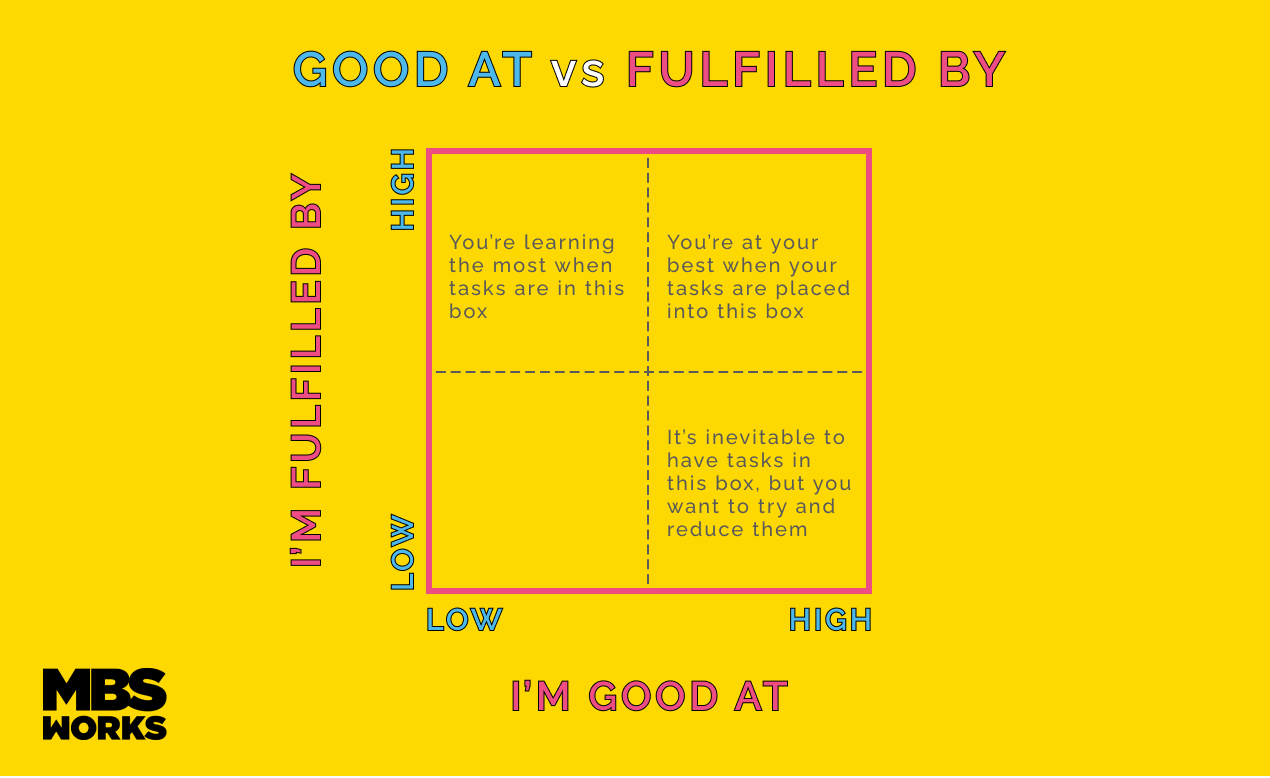
Draw a two-by-two matrix – a box with a cross separating it into four equal spaces. One axis is I’m Good At (low to high), the other I’m Fulfilled By (also low to high).
Consider your key responsibilities and most common day-to-day tasks and assign them to the appropriate box.
If you’re lucky, you’ll have several tasks in the High/High box – you’re both good at and fulfilled by them.
If you’re hungry to reach your learning edge, you’ll be delighted to see a few things in the Low Good At/High Fulfilled By box.
And if you’re human, you’ll have items in the diagonally opposite box – Low Fulfilled By/High Good At.
You want to find ways to not get assigned stuff in the Low Fulfilled By/High Good At box, and get assigned more stuff in the High/High and Low Good At/HighFulfilled By boxes.
3. Work on Your Self-Awareness
When you’re at your best, you’re the most inspiring, purpose-driven, generous version of yourself.
But consistently being at your best isn’t easy. You know how it is. Maybe when you’re tired or hungry, you get a little cranky. Or when you’re nervous, you shut down and lose your ability to think creatively.
It takes an understanding of these fluctuating moods and thought patterns to show up consistently.
When you know yourself in this way, you can make wise, informed choices about how you want to behave, and ensure you’re bringing the best you can, even on not-so-great days.
While we can’t control all the thoughts and feelings that enter our heads, we can choose which ones we respond to.
4. Gather External Perspectives
We all love a good label, don’t we? And assessment tools cater to that perfectly. We get given a bunch of supposed insights telling us the category we fit into – our strengths, weaknesses, even our parenting styles!
But the problem is that these tests are all self-reported. It’s hard, as the saying goes, to read the label from inside the jar.
Inevitably, these assessments reinforce our own self-serving biases, and that skews their accuracy.
I think a much better way to dive deeper into who you are at your best is by getting perspectives from the people around you.
Asking questions like – “What do you think I stand for? and “What do you think makes me stand out from the crowd?” will give you much more illuminating, specific insights than a generic personality test.
5. Amplify What’s Working
With strengths, there come weaknesses. With you at your best, there comes you at your worst.
Now, there are two schools of thought about weaknesses. One is around fixing weaknesses and mending what’s broken. The other (which is where my bias lies) is to amplify what’s working and manage around your weaknesses.
I prefer the second school of thought because I believe we can spend an awful lot of time and effort trying to improve our weaknesses when really it’s just destructive.
Sometimes, it’s okay to say – “You know what, I know I’m just not that good at this, so please don’t give it to me.”
For example, I’m really good at coaching people and helping them unlock their potential.
But I’m terrible with details – calendar invites, spreadsheets, deadlines. My brain turns to mush. But other people excel at these things, and so I look to work with people who can make up for my deficits, and I for theirs.
6. Train Your Meta Strengths
“Who am I at my best?” also invites you to think about those attributes that encapsulate what it means to be a good adult human – things like generosity, courage, tolerance, openness to possibilities, and love.
I call these traits “meta-strengths”. No matter what your technical skills are, these are strengths that all of us can and should be working on.
A powerful way to keep these meta-strengths front of mind as you engage with others is to follow these three simple principles:
- Stay curious. Whatever you think is going on, you’re (at least partially) wrong. Sure, you see some of the picture, but you don’t see all of it by any means. Curiosity brings you back to tolerance and openness. It dispels the fog that ambiguity brings and helps you understand situations more deeply and truly.
- Stay vulnerable. Vulnerability isn’t, “Oh, I’m just going to be messy and self-revelatory and confused and upset.” Being vulnerable is a show of strength. It’s about looking at what appears to be calm and challenging it. It means disrupting the composed and comfortable by being courageous.
- Stay kind. Working relationships are always going to have their ups and downs. But remember, you’re doing your best, and they are probably trying hard too. Assume positive intent. Be generous. Be patient. Be kind.
You’re Ready for the Keystone Conversation
This whole process is all about getting to know yourself better so you can better communicate what’s going to bring out the very best in you.
Once you’re clear on who you are, what you stand for, and what your best is, you’re ready to make your working relationship the best possible versions of themselves.
If you’d like to explore how to do that in more detail, you’ll like my newest book, How to Work With (Almost) Anyone.

